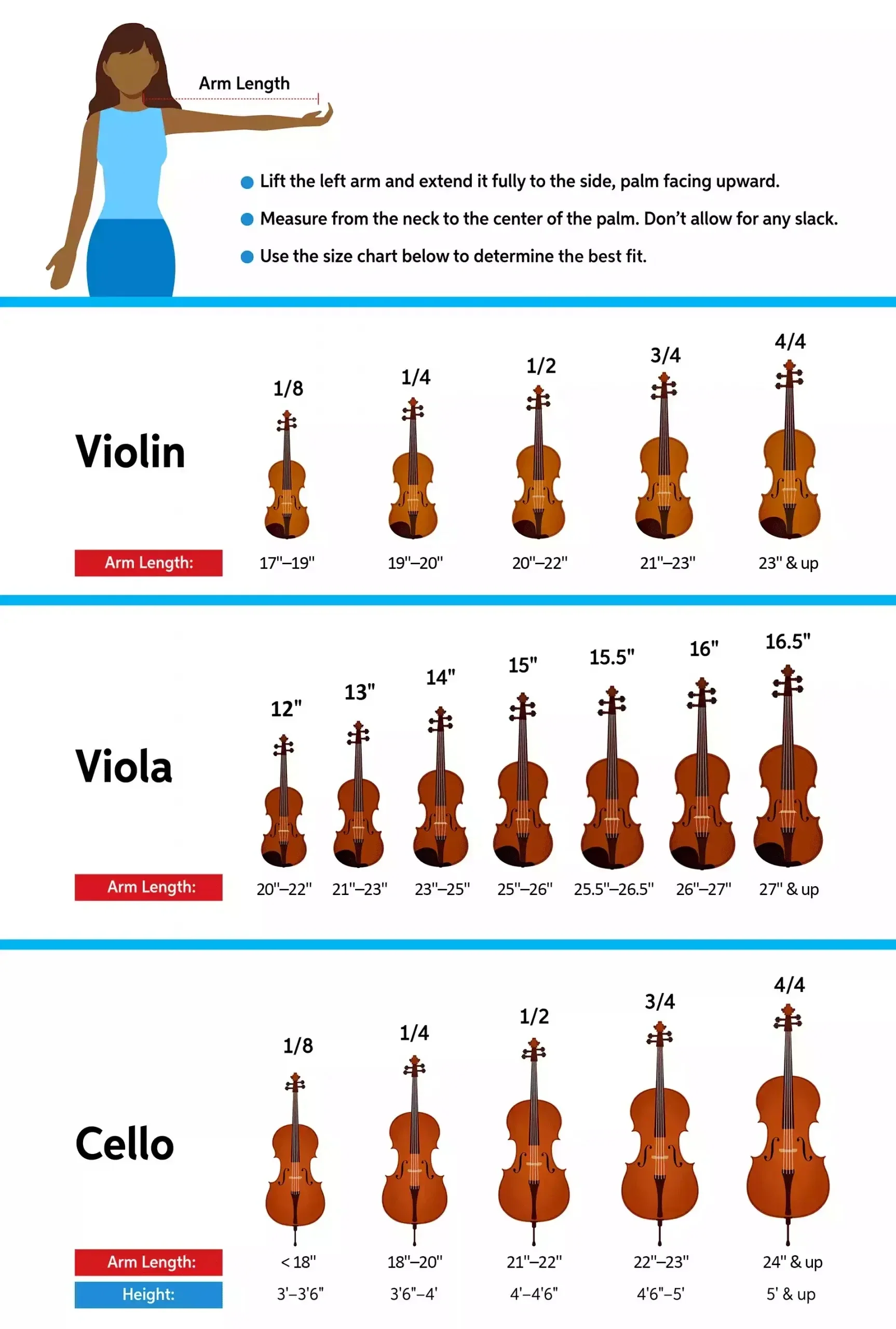Things to Consider When Choosing an Instrument
Some instruments are heavier and some are lighter:
- Lighter instruments: Flute, Clarinet, Trumpet, Violin, Viola
- Heavier instruments: Percussion, Saxophone, Euphonium, Trombone, Cello
Some instruments are louder than others:
- Quieter instruments: Flute, Clarinet, Violin, Viola, Cello
- Louder instruments: Percussion, Saxophone, Euphonium, Trombone, Trumpet
Some band instruments require deep breathing:
- Requires deeper breathing: Flute, Saxophone, Euphonium, Trombone
Some instruments play the melody and others play the harmony or background:
- Plays the melody more: Flute, Clarinet, Violin, Trumpet
- Plays the background more: Saxophone, Percussion, Euphonium, Trombone, Viola, Cello
Some instruments can be played in many different types of music and groups (orchestra, band, jazz band, pep band, marching band, etc.)
- Plays in school orchestras: Violin, Viola, Cello, Double Bass
- Plays in school bands: Flute, Clarinet, Saxophone, Trumpet, Trombone Euphonium, Percussion
- Plays in most jazz bands: Trumpet, Trombone, Saxophone, Percussion (occasionally clarinet, flute), bass
Sizing Charts for Violin, Viola & Cello
Generally speaking, you can determine what size violin or viola you or your child needs based on arm length. Fully extend the left arm to the side with the palm facing upward (see example below). Then, take a measurement from the neck to the center of the palm. After that, use the size chart below to determine the best fit.
For cellos, most teachers will recommend sizes based on the player’s height. You can also determine cello sizes by using the same arm-length method used for violins and violas.
For more information visit Sweetwater.com
Helpful Band Videos:
Mr. Barnard’s Virtual Band Room
Virtual Band Room: See How Instruments Look & Sound
Helpful Orchestra Videos:
Virtual Orchestra Room: See How Instruments Look & Sound
D97 Beginner Band/Orchestra FAQs
Tips for Instrument Care & Cleaning
- For tips on how to keep your instrument clean without damaging it, click https://nafme.org/covid-19-instrument-cleaning-guidelines/
- Do not let other children (including siblings) play the instrument.
- Be sure the instrument is returned to its case after practicing.
- Don’t drop it.
- Keep track of the instrument—do not leave it at school, on the bus, at a friend’s house, in your car, etc.
- Don’t wait to get your instrument repaired if there is a problem–you can’t play well on an instrument that isn’t working right! Take it to Austin Music Center as soon as you can.
- If your instrument gets damaged (beyond normal wear and tear), immediately let your band/orchestra teacher know. They will contact PING! if a replacement is needed.
- When Is It Time to Take Your Band Instrument In for Service?
- Signs It’s Time to Replace Your Orchestral Strings and Other Tips for Care of Your String Instrument
Tips for Music Lessons and Practicing
- Remind your student to arrive for their lesson at school on time. Maybe have them set an alarm on their watch, phone, or iPad.
- Leave the instrument and book by the door on the night before the lesson day to make sure they take them to school.
- Practicing an instrument is important—like doing homework. Students should begin by practicing 10 minutes a day as a 4th grader and then gradually add time until they are practicing around 80-100 minutes a week. The more they practice, the better they get and they have more fun with it, which makes them want to keep at it!
- Middle-school parents are often expected to review and sign a weekly practice log (just like homework!).
- Provide a quiet space and time for practicing. Turn off the TV and radio so your child can concentrate.
- Offer encouragement. It might take a while for your child to sound musical!
- Attend all school concerts and celebrate their successes!! These are enjoyable evenings for everyone.
- Encourage your student to participate in all PING!-sponsored enrichment events. Generally these events have limited enrollment, so it is important to RSVP when you get a notice from PING!.
- Enjoy music with your student!

